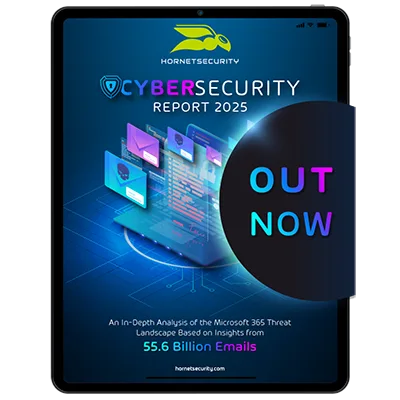

KPIs for Measuring the Effectiveness of Your Cybersecurity Efforts
Cybersecurity isn’t just about firewalls, antivirus software, or the latest threat detection tools. The biggest risk to your organization might be sitting right next to you… or maybe it’s you (don’t take it personally). Human error is still the leading cause of data breaches. Click-happy employees, reused passwords, ignored warnings, sound familiar?
And that’s where measuring cybersecurity KPIs comes in. Not the boring kind that sits in a forgotten spreadsheet, but the kind that actually tells you if your team’s ready to spot a phishing email or flag suspicious activity before it snowballs into a full-blown incident. More specifically, we’re talking about key performance indicators that help assess the effectiveness of security awareness training.
Why Metrics Matter: Humans Are Still the Weakest (and Most Important) Link
This Infosecurity Data Breach Report highlighted that human error contributes to nearly 95% of cybersecurity incidents. That’s wild.
Think about it, a single click on a shady link can trigger a chain reaction that costs millions, wrecks reputations, and if you’re in a healthcare or finance organization, also invites the regulatory headache. And while technical defenses catch a lot, they’re not magic shields as people still are the last line of defense.
That’s why measuring how well your employees actually understand cybersecurity basics isn’t optional anymore. It’s a ‘mandatory’ essential.

Important Cybersecurity KPIs
Cybersecurity KPIs cover a broad range from technical response times to financial impact. Here’s a quick snapshot of the most important ones:
- Cost of cyber incidents: Obvious but powerful, tells you what breaches are really costing you.
- Mean Time to Acknowledge (MTTA): How fast your team recognizes a threat.
- Mean Time to Respond (MTTR): How long it takes to start doing something about it.
- Mean Time to Resolve (MTTR v2?): How long it takes to fully fix the issue.
These are important, no doubt. But let’s zoom in on something often overlooked, your people. This article focuses on the cybersecurity KPIs that help evaluate the effectiveness of security awareness training where a lot of the risk (and opportunity) lives.
KPIs for Security Awareness Effectiveness
Security awareness training isn’t about checking a compliance box once a year. It’s about behavioral change. So, let’s talk about the KPIs that help you know if it’s working or just noise.
Phishing Simulation Click Rate
Let’s say you send a fake phishing email to your team. How many take the bait?
This metric tells you who’s falling for what and whether previous training has made a difference, and ideally, you want this number trending down over time, you can name it “Risk Score”. A high click rate means there’s a gap somewhere either in your training, your communication, or just user awareness in general.
Incident Reporting Rate
When employees spot something sketchy, do they report it? Or do they shrug and move on?
This KPI measures how proactive your people are. A rising incident reporting rate (assuming the reports are valid) usually signals growing awareness and confidence in recognizing threats. It also shortens response time and limits damage.
Training Completion Rate
If your employees aren’t even completing their training, well… that’s a problem.
Completion rates are a baseline metric. You need to know who’s participating before you can measure improvements. But also watch out for passive completion clicking through slides which isn’t the same as understanding the content.
Time to Report Incidents
How long does it take for someone to raise their hand after spotting a suspicious email or activity?
Quicker reports mean quicker responses. This KPI connects security awareness directly to real-world outcomes. Delayed reporting can give attackers a head start.
Behavior Change Metrics
Okay, this one’s trickier to measure, but it’s the most meaningful.
Are employees applying what they’ve learned? Are they using stronger passwords? Are they checking links before clicking? You can track this through follow-up assessments, behavioral analytics, or even spot-checks during security audits.
How Weak Security Awareness Can Increase Vulnerability to Phishing, Malware, and Insider Threats
Let’s be honest though, no matter how good your security stack is, one careless click can undo all that hard work. Weak awareness training leaves you vulnerable to:
- Phishing attacks: Still the #1 vector for breaches.
- Malware infections: Especially from attachments or sketchy downloads.
- Insider threats: Sometimes accidental, sometimes malicious.
- Credential compromise: Think password reuse or oversharing.
In industries like healthcare or finance where personal data flows like water this isn’t just a technical issue. It’s a legal one. (HIPAA violations, anyone?)
Just ask Change Healthcare, the NHS, or NPD. Their stories are cautionary tales about how small missteps can snowball into massive breaches.
Real World Scenario – Why Security Awareness is a game-changer
You know what is a great example of security awareness actually working? Qualcomm.
They had a group of about 1,000 employees who, let’s just say, weren’t exactly phishing savvy. These folks were the most likely to click on suspicious links, basically, the “high risk” crowd. Instead of writing them off or sending generic training their way, Qualcomm doubled down with a focused, customized program using Hoxhunt.
What happened next? Pretty impressive.
In just nine months, this group cut their phishing failure rate by 75%. Yep, four times better. They went from being the most vulnerable to becoming some of the most vigilant. Total transformation.
That success wasn’t just a blip either. Qualcomm scaled the program globally, and company-wide, phishing simulation failures dropped by a factor of six. That’s not just training, it’s cultural change. Their targeted approach didn’t just improve stats, it made their people sharper and their security posture a whole lot stronger.
Dear reader, if you are interested in some more examples and case studies, here are 40 other examples how Security Awareness Service can buff up your defenses.
Using KPIs to Strengthen Your Security Culture
Here’s the thing, security culture isn’t something you just roll out. It takes time and it’s built bit by bit through consistency, visibility and data.
When you track the right KPIs, you’re not just checking boxes. You’re learning where your team struggles and then you’re adjusting the training to fit these real-world gaps, preferably creating phishing campaigns with current events and scenarios and your main goal is turning reactive behavior into proactive habits.
And it works. A recent study by Keepnet Labs found that companies with ongoing awareness programs reduced phishing click rates by up to 70% over a year. That’s not fluff, that’s risk reduction in action.
How Hornetsecurity’s Security Awareness Service Makes It All Easier
Let’s cut to the chase, we know that tracking this stuff manually is a pain. Spreadsheets? Outdated. Guesswork? Risky. Hornetsecurity’s Security Awareness Service takes the manual work out of the equation.
Here’s how it helps:
- Custom Training: It tailors content based on real-time threat data and employee performance. No more one-size-fits-all sessions.
- Live Dashboards: You get analytics and visual reports that show who’s progressing, who’s falling behind, and where to focus next.
- Continuous Updates: As threats evolve (and they always do), the platform updates its content to stay ahead of attackers.
- Gamified User Panel: Centralized access to e-learning with gamification to motivate users
It’s like having a coach, a dashboard, and a threat analyst all rolled into one.

Conclusion – The Necessity of Measuring Security Awareness
Here’s what we know: human error still leads the charge as the major cause of security breaches. But it doesn’t have to.
By tracking the right cybersecurity KPIs especially those tied to awareness training, you turn your workforce from a liability into a security asset and that’s not just good for compliance. It’s good for business.
So, if you’re serious about reducing risk, improving readiness, and building a culture where people know what to look for (and what not to click), start by measuring what matters.
FAQ
Human error accounts for nearly 95% of cybersecurity incidents, which means a single careless click can lead to devastating consequences for your organization.
Critical KPIs include phishing simulation click rates, incident reporting rates, and behavior change metrics. These indicators show if your training is genuinely making a difference.
By tracking security awareness KPIs, you can transform your workforce into a proactive defense against breaches, ultimately protecting your business and enhancing its reputation for security.


